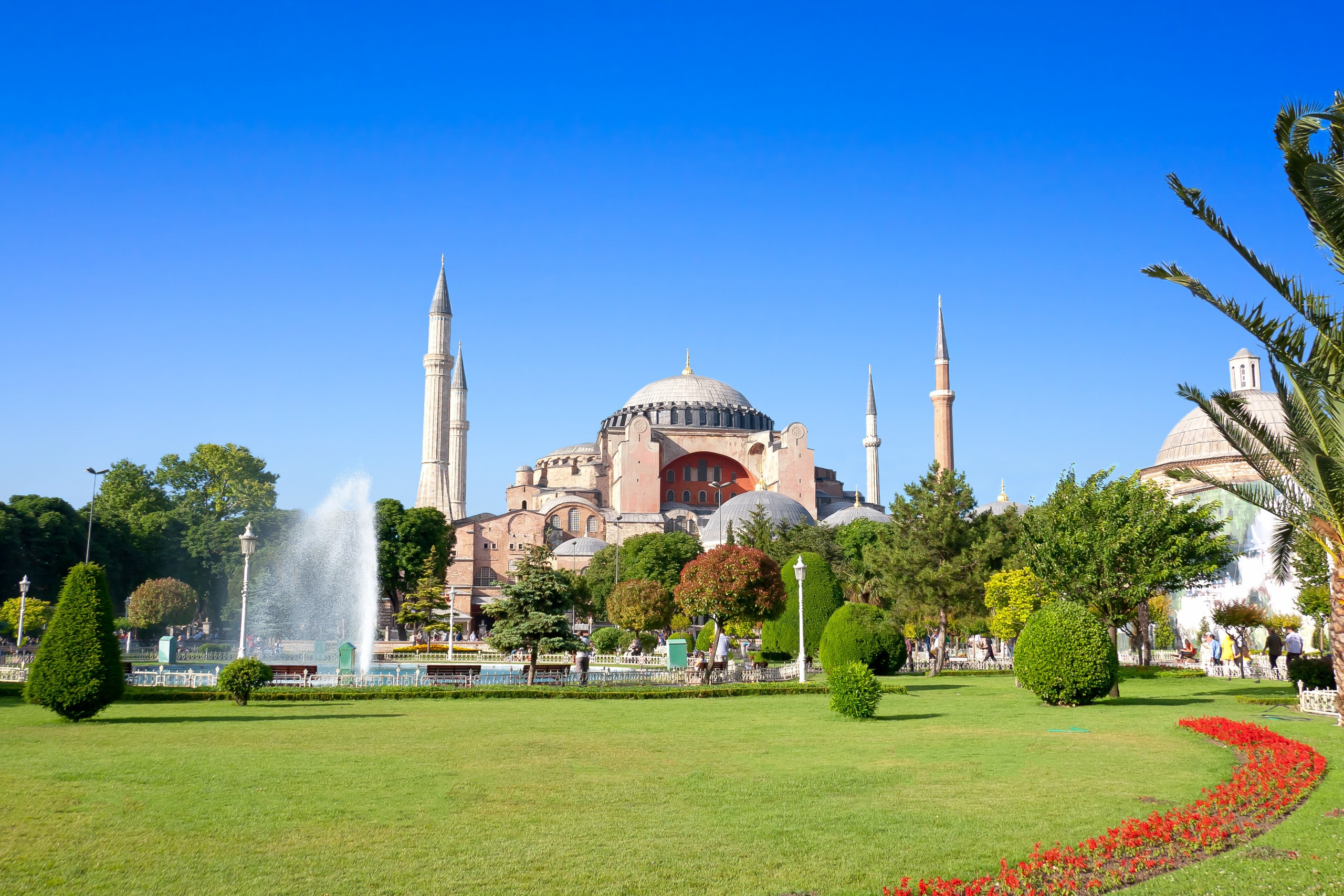
Istanbul, Turkey
Istanbul, Turkey
Description
Istanbul rises from the Bosphorus, a vision of minarets and domes sparkling in the light. The capital of vanished empires, Istanbul is a true crossroad, the only city on Earth to span two continents. This meeting place of Europe and Asia, of Christian and Muslim, is one of the great adventures a traveler encounters. Browse the stalls of the world's largest bazaar, explore ancient mosques and churches, and gaze at the stunning jewels in the Topkapi Palace.
Istanbul has dominated the Straits of Bosphorus for 25 centuries. As Constantinople, capital of the Eastern Roman Empire, it was a metropolis of stunning splendor when the great cities of Europe were mere villages.
Points of Interest
- Hagia Sofia
- Topkapi Palace
- Blue Mosque
- Grand Bazaar & Carpet Demonstration
- Bosphorus Cruise
- Underground Cistern
- Topkapi Palace Harem
- Hippodrome
More about Istanbul, Turkey Points of Interest
-
Hagia Sofia -
This magnificent model of Byzantine architecture boasts a huge dome, and an interior adorned with marble and pillars from Ephesus.
-
Topkapi Palace -
Once the treasure-filled residence of the Ottoman sultans for nearly 400 years, this popular attraction is home to the famed Topkapi diamond, and exhibits of gold, jade and fine Oriental porcelain.
-
Blue Mosque -
One of the city's most enduring landmarks, this 17th-century mosque is renowned for its domes and minarets. Its interior is dotted with 20,000 delicate blue Iznik tiles in 33 shades.
-
Grand Bazaar & Carpet Demonstration -
The largest covered market in the world, the Grand Bazaar is an intriguing maze of 65 winding streets replete with 4,000 shops, cafes and restaurants. Prior to your visit enjoy a carpet demonstration where you can observe the different stages of the carpet making process.
-
Bosphorus Cruise -
Considered one of the most beautiful sights in the world, the Straits of Bosphorus divide Europe and Asia, and set the stage for a breathtaking motorboat cruise past Ottoman palaces and castles.
-
Underground Cistern -
Built during the reign of Justinian I, the cistern is also known as the "Underground Palace." The ceiling is supported by 336 Corinthian columns.
-
Topkapi Palace Harem -
The harem section of Topkapi Palace was carefully situated so that it could not be seen from the state apartments or the courtyards where public affairs were conducted. Construction began under Suleyman the Magnificent and continued through the time of Mahmut II. The Harem has a highly complex floor plan, consisting of several buildings and hundreds of elaborately decorated rooms.
-
Hippodrome -
The square was once the site of a Roman circus that rivaled the Colosseum. Monuments here include the Snake Column from Delphi and an obelisk from Karnak.